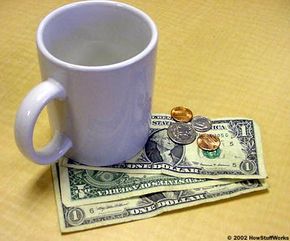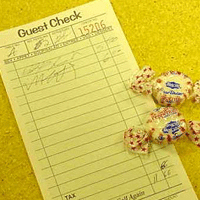Tip jars are everywhere -- from your local coffee shop to the deli -- blurring the lines of gratuity, making it that much more confusing to know when to reach for your wallet. So how do you know when you should tip and when you shouldn't?
If you've ever worked in the hospitality industry -- waiting tables, tending bar, carrying luggage -- you've probably depended on tips from your customers to make ends meet.
Advertisement
Many people who haven't worked in this industry don't realize that the servers, guides, drivers, concierges and others who help improve our dining and traveling experiences sometimes aren't paid even minimum wage by their employers -- not to mention cost-of-living increases. They depend on the gratuities that their customers give them for good service and friendly help.
Although tipping is a multibillion-dollar industry, it isn't a globally consistent phenomenon. In fact, in some countries, tipping is illegal. In this article, we'll look into the custom of tipping, learn how it began, determine how much we should tip for different services, and examine research that has been done on what makes us tip more (or less) than usual.
A tip, or gratuity, is a small amount of money given voluntarily as a token of appreciation for a service rendered. We tip our servers as a way of thanking them for good service. We might also leave a very low tip, or no tip at all, as a signal that the service was substandard.
But how did tipping get started in the first place? Why don't employers just pay their employees a regular wage and increase their prices to make up the difference? In some places, they do, but many of us -- especially in the United States -- are so accustomed to leaving a tip for good service and uncertain about protocol, that we end up leaving our servers money anyway.
There are also several theories about where the word "tip" comes from. One holds that in the 17th century, the word was used as a verb to mean "hand it over" or "to give." This follows suit with the stories of feudal lords throwing gold coins as "tips" to the peasants in the street to ensure their own safe passage [Source:Metroactive].
Tip is also thought to be an acronym for "to insure promptness," with its origins in 16th-century English coffeehouses. This idea is challenged, however, because some say acronyms weren't widely used until the 1920s. In addition, the more correct version would be "to ensure promptness."
Furthermore, Random House's Word of the Day column disputes the tip-acronym-hypothesis, stating, "Tip was originally thieves' slang -- then called 'cant' -- and meant 'to give; pass along'" [Source: Random House].
In the next section, we'll look at the psychology of tipping and tricks of the trade to increase gratuity.
Advertisement








